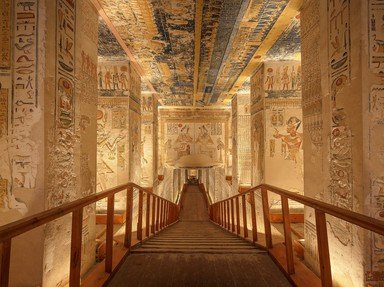Quiz Answer Key and Fun Facts
1. Thoth was the Ancient Egyptian god of what?
2. What was the goddess Ammut known as?
3. Anubis was considered the god of Embalment for what reason?
4. The Process of mummification coincided with the cycle of the constellation Orion. How did this relate to the process of mummification?
5. During the process of mummification, most of the organs were removed from the body. Which four organs were put into the Canopic Jars?
6. The bandages used to mummify the deceased were thought to associate the dead with which god?
7. The Ancient Egyptians believed that a person's soul was made up of several parts and that those parts would separate when a person died. The person's ka was interpreted as what?
8. The akh is thought of as a person's spirit form. What was it represented as in hieroglyphs?
9. Before the deceased's soul could enter the afterlife it would first have to go through the Weighing of the Heart process to judge whether the soul was worthy of passing on to the afterlife. Why did they weigh the heart?
10. In order to judge whether the heart was worthy of passing on to the afterlife, it would weigh against the feather of Ma'at. What would happen if the heart was heavier than the feather of Ma'at?
Source: Author
lovesaphira
This quiz was reviewed by FunTrivia editor
agony before going online.
Any errors found in FunTrivia content are routinely corrected through our feedback system.

